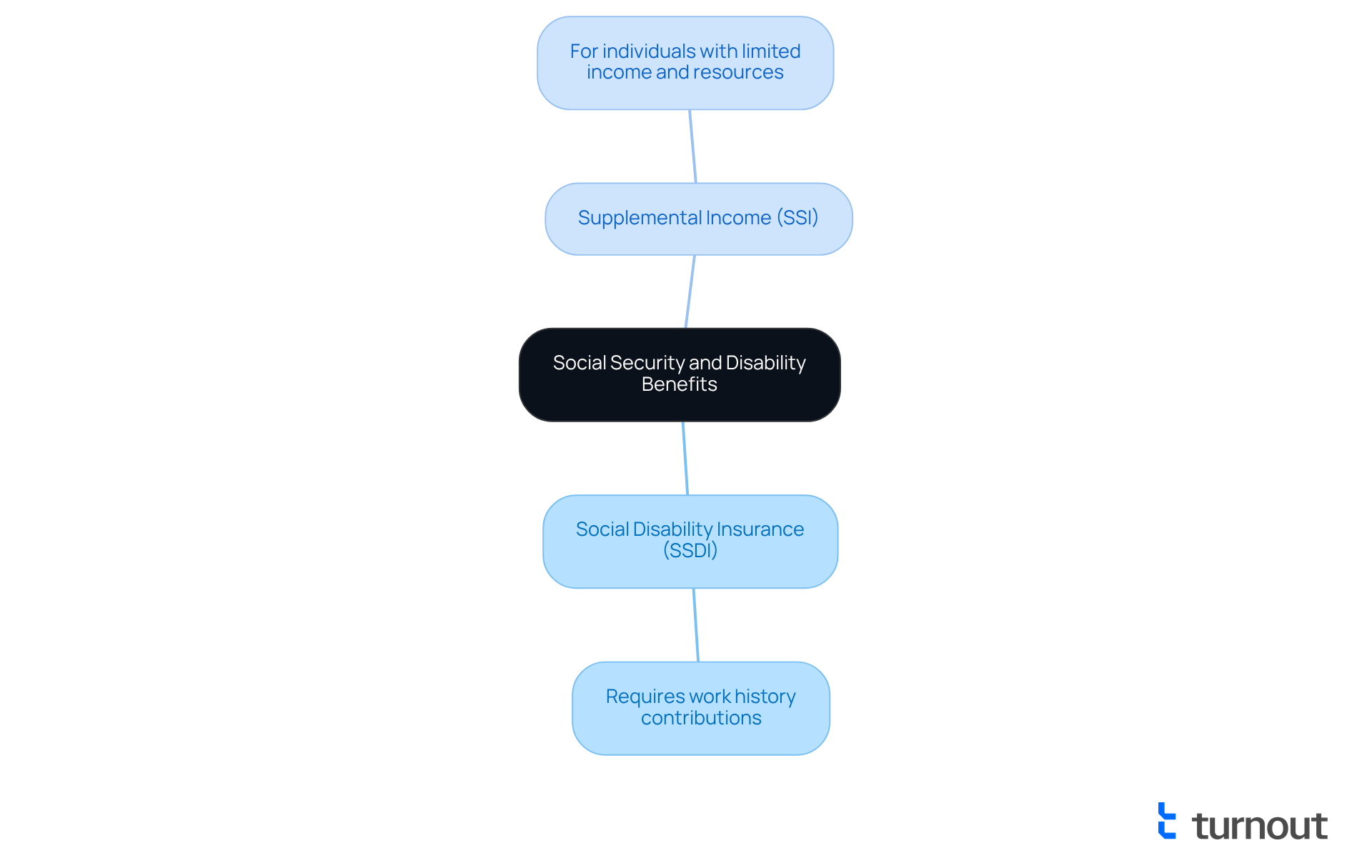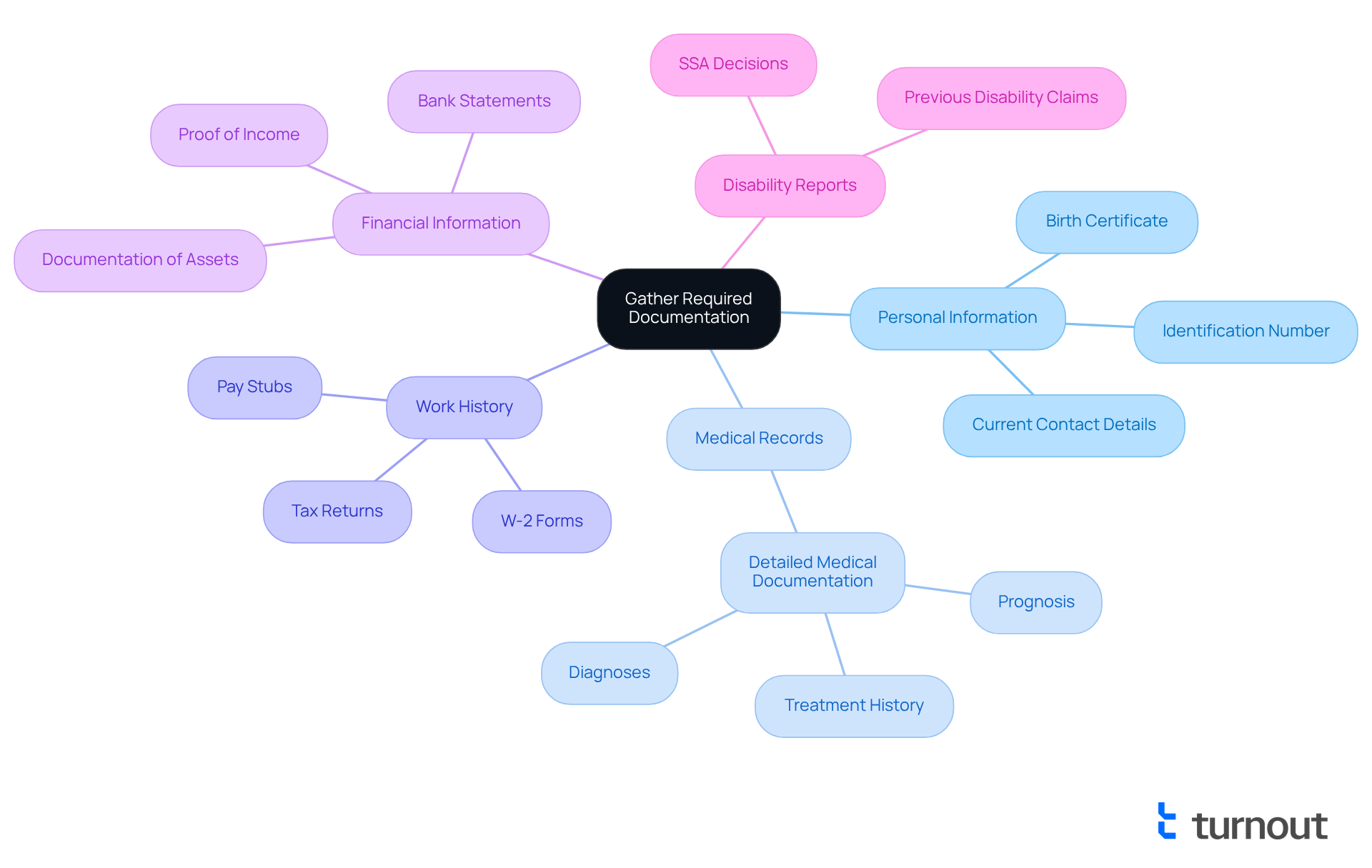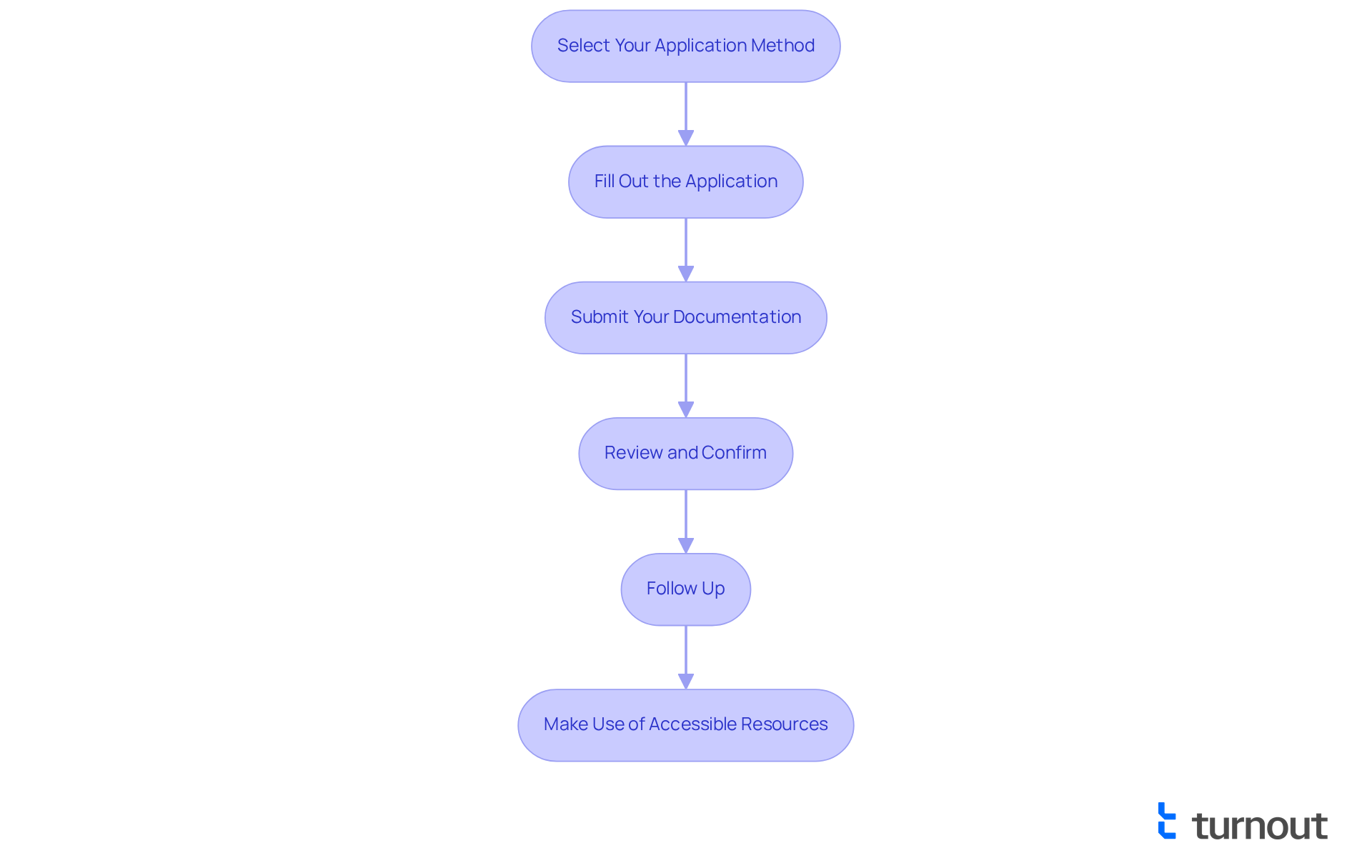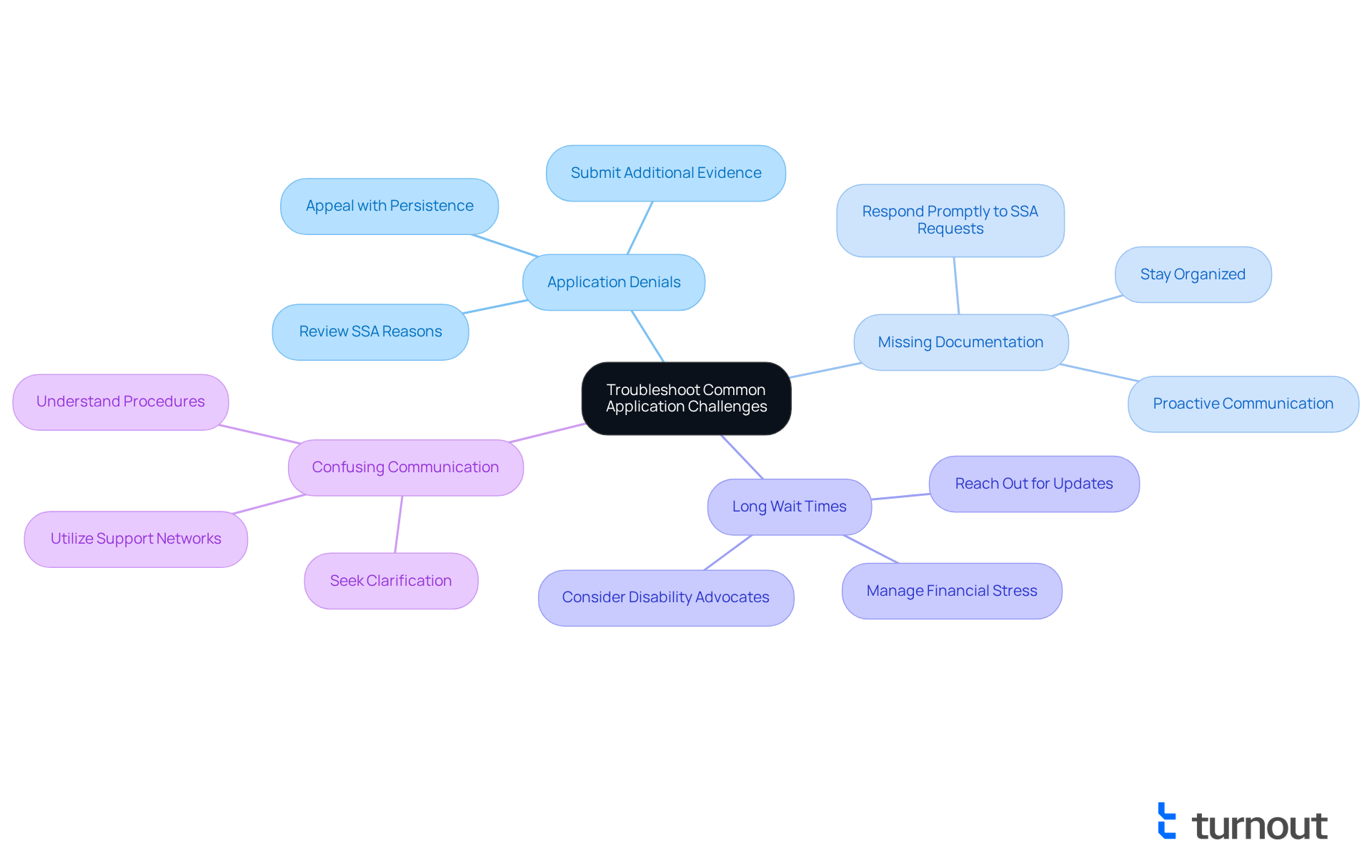Overview
This article offers a caring and comprehensive step-by-step guide to mastering Social Security and Disability Benefits. We understand that navigating these benefits can be overwhelming. Our focus is on helping you understand the types of benefits available, determining your eligibility, gathering the necessary documentation, and successfully navigating the application process.
We emphasize the importance of thorough documentation to avoid common pitfalls. It’s common to feel lost in this process, but we’re here to help. We outline key factors for eligibility and offer strategies to troubleshoot any challenges you may face during the application process.
By empowering you with this knowledge, we aim to help you access the benefits you need. Remember, you are not alone in this journey; we are here to support you every step of the way.
Introduction
Navigating the complex landscape of social security and disability benefits can often feel like an uphill battle. We understand that this journey is particularly challenging for those facing disabilities. It's crucial to grasp the distinctions between Social Security Disability Insurance (SSDI) and Supplemental Security Income (SSI), as each program serves different needs and eligibility criteria. However, the journey doesn’t stop at understanding; it also involves gathering the right documentation and successfully completing the application process.
What happens when applicants encounter common hurdles, such as application denials or missing documentation? It’s common to feel overwhelmed in these situations. This guide offers a step-by-step approach to mastering the social security and disability benefits system. We’re here to empower you to overcome obstacles and secure the financial support you deserve.
Understand Social Security and Disability Benefits
Social security and disability benefits are here to provide financial support for those who find it challenging to work due to a disability. We understand that navigating these options can feel overwhelming. It’s important to grasp the two main types of benefits related to social security and disability:
- Social Disability Insurance (SSDI)
- Supplemental Income (SSI)
SSDI is available for individuals who have contributed to the social insurance system through their work history. On the other hand, SSI is designed for those in need, specifically for individuals with limited income and resources. By familiarizing yourself with these distinctions, you can better identify which social security and disability program may meet your needs and understand the specific requirements tied to each. Remember, you are not alone in this journey, and we’re here to help you find the support you deserve.

Determine Your Eligibility for Benefits
Navigating the process of determining your eligibility for social security and disability can feel overwhelming. We understand that you may have many questions and concerns. To help you, consider these important factors:
- Work History: For SSDI, it’s essential that you have worked a specific number of years and paid taxes for public insurance. You can verify your work credits on your government benefits statement.
- Disability Status: It’s crucial that you have a medical condition that aligns with the Administration's (SSA) definition of disability. This means it must significantly hinder your ability to work.
- Income and Resources: For SSI, your income and resources should fall below specific limits. Take a moment to review your financial situation to see if you qualify.
- Age and Residency: Ensure that you meet the age requirements and are a resident of the U.S. or a qualified alien.
By thoughtfully evaluating these criteria, you can better ascertain your eligibility and prepare for the next steps. Remember, you are not alone in this journey, and we're here to help you every step of the way.

Gather Required Documentation for Your Application
Before applying for benefits, we understand that gathering the necessary documentation can feel overwhelming. Here's what you'll need:
- Personal Information: Please include your identification number, birth certificate, and current contact details.
- Medical Records: Compile detailed medical documentation from your healthcare providers, covering your diagnoses, treatment history, and prognosis.
- Work History: Provide pay stubs, W-2 forms, or tax returns to verify your work history and earnings.
- Financial Information: For SSI applicants, include bank statements, proof of income, and documentation of assets.
- Disability Reports: Gather any previous disability claims or decisions made by the Social Security Administration (SSA).
Arranging these documents beforehand is essential. It not only simplifies the procedure but also significantly reduces the chances of mistakes. In fact, statistics indicate that approximately 65-70% of initial requests for social security and disability are denied due to incomplete information or insufficient evidence. This highlights the challenges many applicants face.
Successful submissions often showcase well-organized documentation. This not only facilitates a smoother review process but also enhances your chances of approval. As social workers often emphasize, "Thorough documentation is key to navigating the complexities of disability claims."
By ensuring that all necessary documents are readily available, you can navigate the social security and disability insurance system with greater confidence and efficiency. Remember, you can seek benefits online, by phone, or in person at nearby government offices. If you encounter missing documents, assistance is available to help you obtain them, alleviating concerns about delays. You're not alone in this journey; we're here to help.

Complete the Application Process Step-by-Step
To successfully complete your application for Social Security Disability benefits, we’re here to guide you through some essential steps:
-
Select Your Application Method: You can submit your application online through the Social Security Administration (SSA) website, by phone at 1-800-772-1213, or in person at your local SSA office. Online submissions are often the quickest choice, making it easier for you.
-
Fill Out the Application: It’s important to provide accurate and detailed information about your personal details, work history, and medical conditions. Thoroughness is crucial, as the SSA requires comprehensive data to assess your eligibility. We understand that this can feel overwhelming, but every detail matters.
-
Submit Your Documentation: Attach all necessary documents, including your Social Security number, birth certificate, proof of citizenship or lawful presence, work history, and income details. Make sure everything is complete to avoid delays in processing. Remember, you are not alone in this process related to social security and disability.
-
Review and Confirm: Before submitting, double-check your application for accuracy. Confirm that all required documents are included, as missing information can lead to significant delays or even denials. It’s common to feel anxious about this step; keep in mind that the national average hearing-level denial rate is 37%, so thoroughness is essential.
-
Follow Up: After submission, it’s important to monitor your status. You can check online or contact the SSA for updates. The average processing time for disability requests is currently around 490 days, so staying informed is essential. If your request is rejected, consider reaching out to attorneys who specialize in social security and disability to assist with the appeal process.
-
Make Use of Accessible Resources: In Wisconsin, you can obtain free support through the Disability Benefit Specialist Program. This program can help you understand and manage your submission. Furthermore, being aware of your rights as a client during this process can empower you and enhance your chances for success.
By following these steps, you can navigate the submission journey with greater confidence and improve your likelihood of a favorable result. Remember, we’re here to help you every step of the way.

Troubleshoot Common Application Challenges
Navigating the disability benefits request process can feel overwhelming. We understand that facing common challenges can be disheartening, but knowing how to address them can significantly improve your chances of success. Here are some prevalent issues applicants encounter, along with supportive strategies to help you through:
-
Application Denials: If your application is denied, take a moment to carefully review the reasons outlined by the SSA. It’s important to remember that most social security and disability claims are initially denied, which is why appealing the decision is crucial. You can do this by submitting additional evidence or clarifying your case. The appeal procedure has a 48% success rate, so persistence is key.
-
Missing Documentation: When the SSA requests more information, it’s vital to respond promptly with the necessary documents. Delays in supplying requested information can extend the decision-making timeline, which currently averages over 225 days for initial applications—an 86% increase in wait times since 2019. We encourage you to stay organized and proactive.
-
Long Wait Times: If you find yourself facing extended wait times for a decision, consider reaching out to the SSA for updates. It’s common to feel anxious during this period. Enlisting the help of a disability advocate can provide you with guidance and support. Remember, many candidates encounter significant financial difficulties related to social security and disability while awaiting decisions, which can increase stress.
-
Confusing Communication: Should you receive unclear communication from the SSA, do not hesitate to seek clarification. Understanding the necessities and procedures is vital to ensuring your submission is managed properly. As one advocate noted, "It takes an unbelievable amount of time to get approval; patience is key, and having someone who understands the system can make all the difference."
By proactively addressing these challenges, you can navigate the application process more effectively. Remember, you are not alone in this journey, and we’re here to help you increase your chances of receiving the benefits you deserve.

Conclusion
Understanding the intricacies of Social Security and disability benefits is crucial for individuals seeking financial support due to disabilities. By familiarizing yourself with the two primary types of benefits—Social Security Disability Insurance (SSDI) and Supplemental Security Income (SSI)—and the eligibility requirements associated with each, you can navigate the system more effectively. This guide offers a comprehensive roadmap for determining eligibility, gathering necessary documentation, and completing the application process step-by-step.
Key insights covered in this article include:
- The importance of understanding your work history
- Disability status
- Financial limits for eligibility
It's essential to have thorough documentation to enhance your chances of approval, as well as to be aware of the common challenges applicants may face throughout this process. By addressing these obstacles proactively, you can significantly improve your likelihood of receiving the benefits you deserve.
We understand that the journey through social security and disability benefits can be daunting. However, approaching it with confidence and clarity is vital. For those seeking assistance, utilizing available resources and support systems can make a meaningful difference. Remember, empowerment through knowledge and preparation not only eases the application process but also reinforces your right to access the financial support that is essential for those in need.
Frequently Asked Questions
What are the main types of social security and disability benefits?
The two main types of benefits are Social Disability Insurance (SSDI) and Supplemental Income (SSI). SSDI is for individuals who have contributed to the social insurance system through their work history, while SSI is designed for those with limited income and resources.
Who is eligible for Social Disability Insurance (SSDI)?
To be eligible for SSDI, individuals must have a specific work history and have paid taxes for public insurance. They can verify their work credits through their government benefits statement.
What are the eligibility requirements for Supplemental Income (SSI)?
To qualify for SSI, individuals must have income and resources below specific limits. Additionally, they must meet age requirements and be residents of the U.S. or qualified aliens.
How does the Social Security Administration (SSA) define disability?
A medical condition must significantly hinder an individual's ability to work to align with the SSA's definition of disability.
What factors should I consider when determining my eligibility for social security and disability benefits?
Important factors include work history, disability status, income and resources, age, and residency. Evaluating these criteria can help you ascertain your eligibility and prepare for the next steps.




